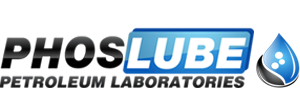Motor Gasoline
Motor gasoline has the highest demand and is typically the most profitable petroleum product on the market. Essential specifications for finished gasoline include volatility, octane rating, distillation temperature profile, aromatics, sulfur content, olefins, and sometimes lead and MTBE content.
Aromatics such as benzene, toluene, and xylenes are used for increasing octane ratings. However, they are highly reactive and can cause health issues. Benzene is classified as a carcinogen and is highly regulated in gasoline.
Olefins are also known for increasing octane. However, olefins can increase emissions which prevents engines from burning fuel efficiently. Like aromatics, olefins are also regulated in gasoline because of this.
An octane increasing alternative to aromatics and olefins is the use of oxygenates. Oxygenates are molecules containing oxygen, hydrogen, and carbon atoms. The oxidization of the gasoline creates a more thorough burn, which leads to fewer exhaust emissions and pollutants. However, oxygenates do create different pollutants. There are two groups of oxygenates used to increase octane rating. Those two groups are ethers and alcohols. The ether produced product, MTBE, is the most common octane enhancing oxygenate apart from the United States and Brazil, where the alcohol produced, Ethanol, is preferred.
Octane rating is the most important gasoline element for a refinery to produce. It is also the most expensive. Engines work by compressing vaporized gasoline with air before igniting it with a high temperature electrical spark. If the spark is not timed properly with the heat and compression, the result is known as autoignition. Autoignition is an uncontrolled burning of gasoline in the piston which can waste energy, damage the engine, and emit more polluted gases from the exhaust due to incomplete burning of the fuel. Autoignition is also known as knocking, pre-ignition, or detonation. The measure of how well a particular type of gasoline will resist autoignition from the heat of compression is known as the octane rating. High Octane rated fuels allow more fuel and molecules to be compressed into the cylinder without autoignition occurring. These high octane fuels tend to be less efficient, meaning less miles per gallon, but they are more powerful, which is the reason why race cars use them.
There are three types of octane ratings:
- Research octane number (RON): RON is calculated using a single cylinder variable compression ratio test engine.
- Motor octane number (MON): MON is also calculated using a single cylinder variable compression ratio test engine, but unlike MON, RON uses less severe test conditions.
- Road Octane number (RdON): is a measure of actual autoignition experienced in real time driving. It is usually used for racing fuels and measured with an instrument known as a dynamometer. The dynamometer is attached to a multi cylinder test engine during these test runs.
Pump octane number (PON): PON is the number that reads across pumps at gas retail stations. The PON varies depending on what part of the world you’re in, but in the United Stated it is calculated by averaging out the RON and MON. Under the US PON rating system, regular gasoline is between 85 and 88 octane, while midgrade and premium gasolines are greater than 88. Most refineries only manufacture regular grade and premium grade gasoline, while the midgrade is blended at a terminal or at the actual service station using the regular and premium gasoline storage tanks.
